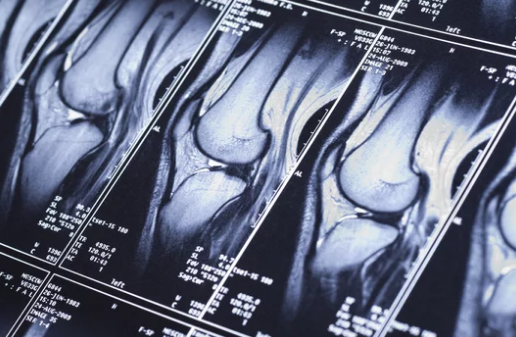Medical imaging has always played a critical role in detecting and monitoring diseases. Among the available imaging technologies, Magnetic Resonance Imaging (MRI) stands out for its ability to capture high-resolution, detailed views of soft tissues, organs, and the nervous system without exposing patients to ionizing radiation.
Now, with the integration of deep learning algorithms, MRI is evolving from a static diagnostic tool into a dynamic system for visualizing and predicting disease progression. This combination is enabling healthcare professionals to see not only the current state of a patient’s condition but also how it is likely to develop over time—transforming both treatment strategies and patient outcomes.
The Importance of Tracking Disease Progression
Understanding how a disease changes over time is essential for:
- Early Intervention – Detecting subtle changes before symptoms worsen.
- Treatment Planning – Tailoring therapies based on how quickly or slowly a condition evolves.
- Monitoring Effectiveness – Assessing whether a treatment is slowing, halting, or reversing disease progression.
- Patient Communication – Helping patients visualize their condition and stay engaged with treatment plans.
Traditionally, disease progression has been tracked using periodic MRI scans, with radiologists comparing images over time. While effective, this approach can be limited by human interpretation and the sheer volume of imaging data.
How Deep Learning Enhances MRI-Based Progression Analysis
Deep learning—a subset of artificial intelligence—uses neural networks to identify patterns in complex data. In MRI analysis, these algorithms can process vast amounts of imaging information to:
- Detect Subtle Changes
AI can identify variations between scans that are too subtle for the human eye, such as microstructural changes in the brain or early tumor growth. - Quantify Progression
Algorithms can calculate exact changes in size, volume, or tissue density, providing objective measurements rather than subjective assessments. - Predict Future Changes
By analyzing historical scan data, deep learning models can forecast how a disease is likely to develop, helping guide preventive measures. - Highlight Areas of Concern
Automated visualization tools can mark specific regions in color, making it easier for clinicians to focus on areas with significant changes.
Applications Across Medical Specialties
Neurology
- Multiple Sclerosis (MS) – Deep learning models track lesion development and brain atrophy over time, providing early warnings of disease flare-ups.
- Alzheimer’s Disease – Algorithms detect subtle hippocampal shrinkage and other brain volume changes years before clinical symptoms appear.
Oncology
- Tumor Growth Monitoring – AI-enhanced MRI quantifies tumor volume changes, helping oncologists adjust treatment plans quickly.
- Treatment Response Assessment – Imaging models distinguish between tumor regrowth and treatment-related inflammation.
Orthopedics
- Osteoarthritis – MRI combined with deep learning predicts cartilage loss rates, allowing earlier joint preservation interventions.
Cardiology
- Heart Failure Progression – Cardiac MRI with AI tracks changes in heart muscle thickness and chamber volumes to assess disease trajectory.
Visualization Tools for Clinicians and Patients
Modern deep learning MRI platforms don’t just process data—they present it in intuitive, interactive ways.
- 3D and 4D Models – Allowing doctors to rotate and view disease progression in spatial and temporal dimensions.
- Color-Coded Maps – Highlighting areas of change for quick interpretation.
- Trend Graphs – Showing quantitative changes over multiple scans.
Patients can also benefit from simplified visualizations, helping them understand why a treatment change is necessary and motivating them to stay on track.
Benefits of MRI + Deep Learning Progression Tracking
- Earlier Intervention – Acting before irreversible damage occurs.
- More Precise Treatment – Tailoring therapy to the patient’s actual disease trajectory.
- Data-Driven Decisions – Reducing guesswork in clinical practice.
- Reduced Diagnostic Error – AI consistency minimizes variability between human interpretations.
Challenges and Ethical Considerations
While promising, there are obstacles to widespread adoption:
- Data Privacy – MRI scans are highly personal, requiring strict protection protocols.
- Model Generalization – AI trained on limited datasets may underperform in diverse patient populations.
- Regulatory Approval – Clinical validation is required before AI tools can be used widely.
- Transparency – Black-box algorithms may make it difficult for clinicians to fully trust AI predictions.
The Future of MRI and Deep Learning in Disease Progression
As computing power and imaging technology advance, the possibilities for MRI-based progression analysis will expand further. Future developments may include:
- Real-Time Progression Mapping – Instant AI feedback during scans.
- Integration with Wearable Data – Combining MRI findings with continuous patient health monitoring.
- Personalized Disease Forecasts – AI models that adapt to individual patient biology and lifestyle factors.
- Global Data Sharing – Secure cloud-based platforms enabling collaborative progression research.
Conclusion
The combination of MRI and deep learning is transforming disease monitoring from a reactive process into a proactive, predictive science. By providing detailed visualizations and precise measurements of disease progression, these tools empower healthcare providers to intervene earlier, tailor treatments more effectively, and ultimately improve patient outcomes.
In the near future, visualizing disease progression through MRI and AI will likely become a standard of care—bridging the gap between detection and prevention, and offering a clearer path toward healthier, longer lives
If you’d like, I can also prepare SEO-optimized metadata, keyword clusters, and structured headings for this article so it ranks highly for searches about “MRI disease progression AI tools.” Would you like me to create that next?
Also Read :
